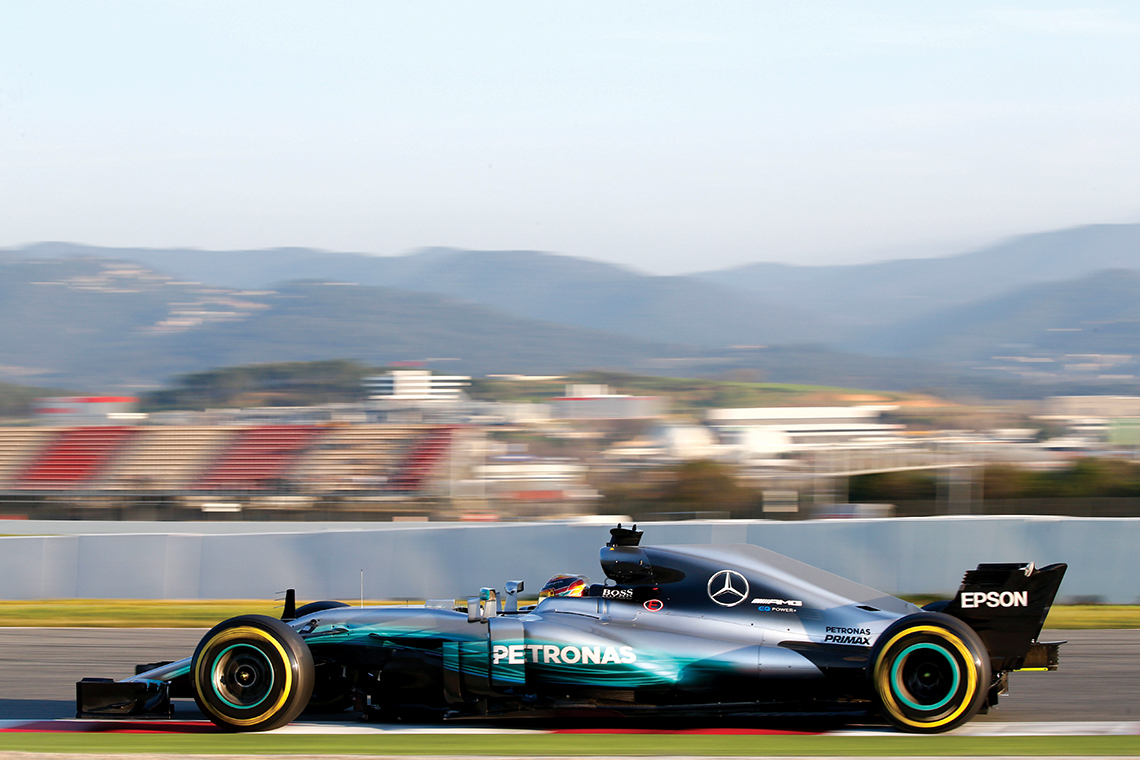By Andrew Glass
Formula 1 is not only exciting for the thrills of a high-speed race. Car design is also an essential part of the competition and a factor that appeals to millions of fans all across the world. For decades, Formula 1 cars have stood out as prime examples of superior race car engineering, yet at their most essential nature, they aren’t that different from an average car.
At their very core, F1 cars are just like traditional automobiles, as in they use combustion engines, rely on suspensions and transmissions, and have wheels and brakes to operate, much like the car parked in your garage. Unlike your car, however, Formula 1 vehicles aren’t built to commute or cruise around the neighborhood. They are conceived with one goal in mind: pushing performance to the limit.
It’s all about speed.
Everything in the process of the design of a Formula 1 car could come down to a simple question: “How can we make this thing go as fast as possible?” Engineers have to solve many technical riddles in order to not only answer this question, but achieve their goal.
Creating a high-performance vehicle is an excellent challenge for a designer, who needs to settle for certain compromises in several areas, such as the car’s weight and build material, its aerodynamic shape, as well as safety for the driver. Mercedes AMG’s 2017 FI W08 EQ Power+ is widely considered one of the most innovative Formula 1 cars to date, and it is highly regarded as a design that sets the bar higher for F1 teams and engineers.
Developed under the supervision of Geoff Willis, Aldo Costa and James Allison, the Mercedes AMG F1 W08 EQ Power+ represents the eighth foray into Formula 1 car constructions for Mercedes, as indicated by the “W08” designation of this particular model. It debuted in 2017 at the Australian Grand Prix, and its final race was at the Abu Dhabi Grand Prix (2017), helmed by award-winning pilot Lewis Hamilton.
Over the years, as engineers managed to implement innovations and improve their design, the average speed of F1 vehicles has increased exponentially. Today, most Formula 1 cars can go as fast as 200 miles per hour and beyond.
Chassis: the heart of the design.
The chassis is one of the most fundamental components of an F1 car—it could be considered the core of the design, and it is often constructed as a single-shell chassis to minimize components and reduce weight. In most cases, highly innovative materials such as carbon fiber composites, resins, and aluminum mesh are often utilized to enhance the sturdiness of the vehicle, without making any compromises concerning density.
In order to further enhance the space within the chassis and the cockpit, which is featured within, the seat is designed to the specific measurements of the actual driver who is going to use the car. Due to the highly customized design, the pilot’s movements and bouncing due to the car’s high speeds are significantly reduced. The Mercedes AMG F1 W08 EQ Power+ is an excellent example of a highly intuitive chassis design. The car sports a molded carbon fiber and honeycomb composite structure, and it was upgraded to feature a narrower nose and maximize its aerodynamic shape. “The car is more complex than before,” Costa said during the Live F1 Tech Brief. “Everything has been redesigned for the higher loads the car has, in terms of aerodynamic load but as well in terms of [tire] grip.” Due to the lightweight construction materials, the W08 only weighs 1,600 lbs. (the average U.S. car tips the scales at 4,000 lbs).
Engine: impressive power.
Recent regulations lowered the average power output of a Formula 1 car. Before 2006, V10 engines were allowed, but F1 regulations made them prohibited, requiring instead 2.4 liter V8 engines. In spite of the power reduction, the performances of Formula 1 vehicles are still mind-boggling, with the average engine being able to produce approximatively 900 horsepower. The Mercedes AMG F1 W08 EQ Power+ is equipped with a state-of-the-art Mercedes-AMG F1 M08 EQ Power+ engine (1.6 L, V6).
 The transmission is also an incredibly critical component in the design of a Formula 1 car. Generally speaking, F1 cars have anywhere between six to eight gears and a mandatory reverse gear. Fully automated transmission systems are not allowed in competitive Formula 1, leaving the drivers to use their skills and judgment in order to determine the best gear for any given scenario. For the Mercedes AMG F1 W08 EQ Power+, the flagship company teamed up with Xtrac in order to develop a semi-automatic sequential gearbox with eight forward gears and a single reverse gear.
The transmission is also an incredibly critical component in the design of a Formula 1 car. Generally speaking, F1 cars have anywhere between six to eight gears and a mandatory reverse gear. Fully automated transmission systems are not allowed in competitive Formula 1, leaving the drivers to use their skills and judgment in order to determine the best gear for any given scenario. For the Mercedes AMG F1 W08 EQ Power+, the flagship company teamed up with Xtrac in order to develop a semi-automatic sequential gearbox with eight forward gears and a single reverse gear.
Design as an art.
Ultimately, the design of a Formula 1 car is somewhere in between technical innovation and art. Engineers need to get creative and think outside of the box to overcome issues and produce the best possible performance, year after year. As the AMG team readies for 2018, one can only wonder what innovation lies ahead.







